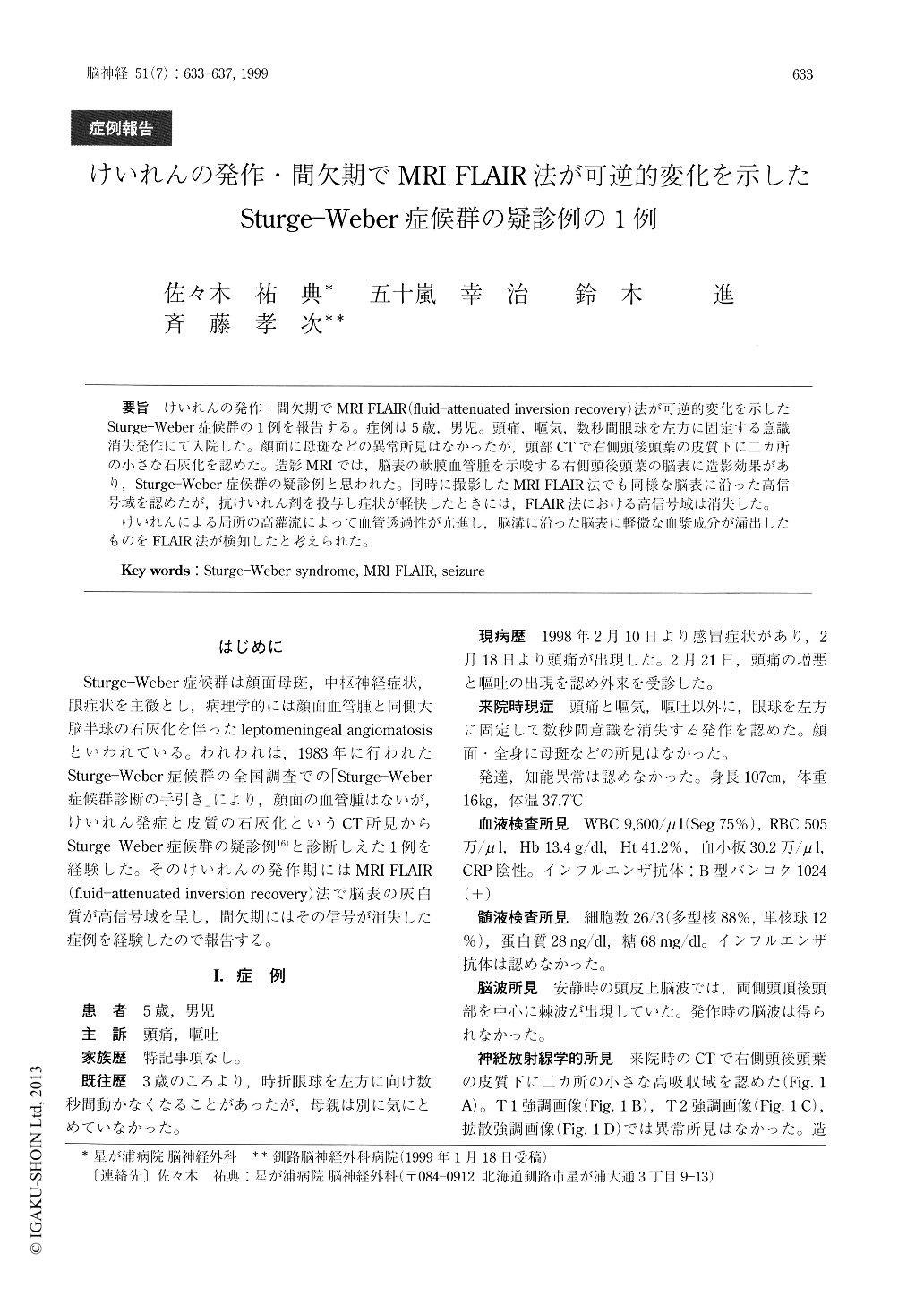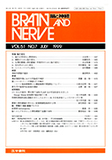Japanese
English
- 有料閲覧
- Abstract 文献概要
- 1ページ目 Look Inside
けいれんの発作・間欠期でMRI FLAIR(fluid-attenuated inversion recovery)法が可逆的変化を示したSturge-Weber症候群の1例を報告する。症例は5歳,男児。頭痛,嘔気,数秒間眼球を左方に固定する意識消失発作にて人院した。顔面に母斑などの異常所見はなかったが,頭部CTで右側頭後頭葉の皮質下に二カ所の小さな石灰化を認めた。造影MRIでは,脳表の軟膜血管腫を示唆する右側頭後頭葉の脳表に造影効果があり,Sturge-Weber症候群の疑診例と思われた。同時に撮影したMRI FLAIR法でも同様な脳表に沿った高信号域を認めたが,抗けいれん剤を投与し症状が軽快したときには,FLAIR法における高信号域は消失した。
けいれんによる局所の高灌流によって血管透過性が亢進し,脳溝に沿った脳表に軽微な血漿成分が漏出したものをFLAIR法が検知したと考えられた。
We report a patient of atypical type of Sturge-We-ber syndrome who demonstrated a reversible change by MRI FLAIR method in ictus and postictal state.
A 5-year-old boy was admitted to our hospital be-cause of severe headache, vomiting and loss of con-sciousness with his eyes conjugated to left for a few minutes. He had no facial nevus and other abnormal findings in physical examination. CT scan showed two small calcifications in the right occipital lobe. Postcon-trast T 1-weighted image of MRI demonstrated a right parieto-occipital leptomeningeal enhancement. We di-agnosed this case as an atypical type of Sturge-Weber syndrome.

Copyright © 1999, Igaku-Shoin Ltd. All rights reserved.


